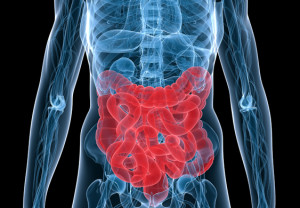
“Mindfulness registers experiences, but it does not compare them. It does not label them or categorize them. It just observes everything as if it was occurring for the first time. It is not analysis which is based on reflection and memory.” – Bhante Gunaratana
Humans have both an amazing capacity to remember and a tremendously limited capacity depending upon which phase of the memory process that is looked at. Our long-term store of information is virtually unlimited. We can recall in great detail events that occurred years ago or a few minutes ago. It not only includes events but things that were memorized by rote, music, places and their relationship to other places, faces, emotions, facts, definitions, etc. It’s really quite amazing. On the other hand, or very short-term memory is extremely limited. This is called our working memory and it can contain only about 5 to 9 pieces of information at a time. This fact of a limited working memory store shapes a great deal about how we think, summarize, and categorize our world.
Memory is not always accurate. We forget a great deal of information or have great difficulty retrieving it. We sometimes vividly recall things that really never happened to us, called false memories. Problems with memory are exacerbated by interference within memory where similar things tend to produce problems in our ability to recalling them. The problems with memory are well known in the legal system where the unreliability of eyewitness testimony is legendary. So, methods to improve memory and recall could be quite helpful, particularly to students who are required to recall information regularly.
Mindfulness has a mixed record in regards to its effects on memory. It has been shown to increase the likelihood of false memories and to impair memory for emotionally negative words but not positive words in adults (see http://contemplative-studies.org/wp/index.php/category/research-news/memory/). But mindfulness has also been shown to improve working memory capacity and Graduate Record Exam (GRE) scores among college students (see http://www.ncbi.nlm.nih.gov/pubmed/23538911). So, mindfulness appears to be able to improve some forms of memory while impairing others. It is thus important to sort out what kinds of memories are affected by mindfulness, in what way, and with whom.
In today’s Research News article “A Randomized Controlled Trial Examining the Effect of Mindfulness Meditation on Working Memory Capacity in Adolescents.”
Quach and colleagues investigated the effect of contemplative practices on working memory in 12 to 17 year-olds. They compared students receiving 4-weeks of the meditation component of a Mindfulness Based Stress Reduction (MBSR) program to students receiving 4-weeks of Hatha yoga training and to untreated students on a wait list. They found that over the 4 weeks the students receiving meditation training significantly improved their working memory capacity while neither the yoga training nor the wait list groups did.
Hence the results indicated that meditation training improved short-term memory in adolescents. This adds to the prior results that mindfulness improved working memory in college students and suggests that meditation practice may be an effective method to improve an important component of students’ memories, working memory. This should, in turn, improve cognitive abilities such as problem solving, mathematics, etc. and improve school performance in general. But, future research will be required to confirm this speculation.
Meditation training improves attentional ability and present moment awareness and reduces mind wandering. These effects of meditation may well account for the improved working memory. By simply being able to concentrate better on the material and stay on task more will be entered into memory and less lost. Also, meditation training has also been shown to increase the size of brain areas involved in memory. This structural change in the nervous system might also underlie the improved working memory. Regardless of the mechanism it appears clear that meditation practice can lead to improved working memory in high school and college students.
So, mindfully improve memory.
“Life is all memory, except for the one present moment that goes by you so quickly you hardly catch it going.” — Tennessee Williams
CMCS – Center for Mindfulness and Contemplative Studies








